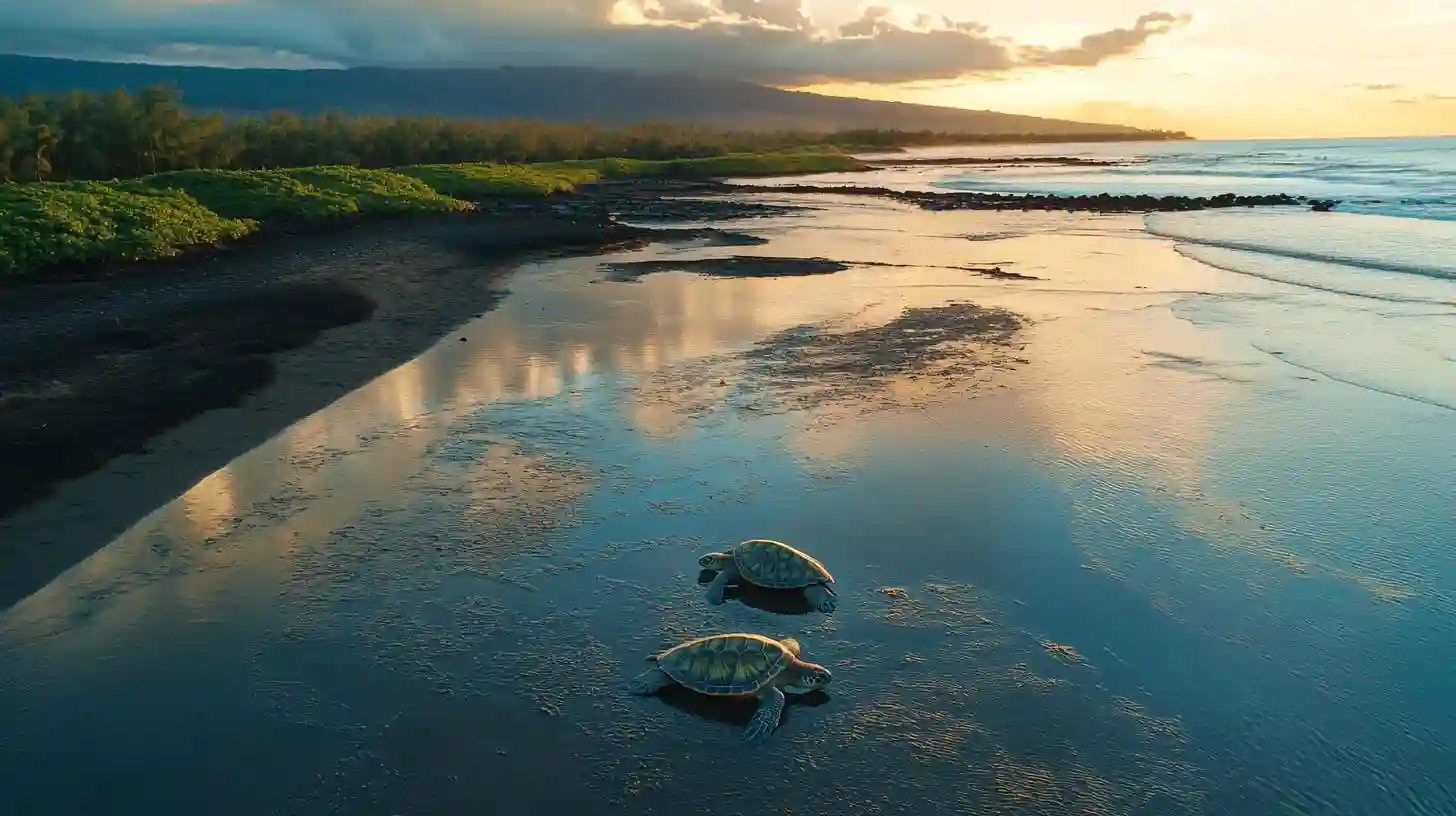
Hawaii's green sea turtles, known as honu in Hawaiian, capture the hearts of many with their remarkable size, graceful movements, and enduring presence in local culture and marine ecosystems. These enchanting reptiles can often be spotted basking in the sun on the warm beaches or gliding effortlessly through the vibrant waters of the Hawaiian Islands. Unique in many aspects, the green sea turtle is not only significant to the environment but also holds cultural importance for the Native Hawaiian people.
The green sea turtle gets its name from the green color of its body fat, which arises from its herbivorous diet primarily consisting of sea grasses and algae. This diet is essential for their survival and contributes to the health of the marine ecosystem. By continuously grazing on sea grasses, honu help maintain the balance in coastal habitats. These turtles play a vital role in the overall health of the coral reefs as well, since they prevent algae overgrowth that can suffocate corals and inhibit their growth. By keeping these ecosystems in check, honu assist other marine life in thriving.
An incredible journey accompanies the life of these turtles, beginning with their remarkable nesting habits. Female honu return to the shores where they were born to lay their eggs. This journey can cover hundreds of miles, showcasing their impressive navigational skills. The nesting process is a delicate one, typically conducted under the cover of night to protect the eggs from potential predators and harsh environmental conditions. After laying eggs in the sand, the mother turtle returns to the ocean, leaving behind her clutch. The hatchlings will emerge after a few weeks, instinctively making their way to the ocean.
While the journey to the sea is perilous due to threats like birds and crabs, many hatchlings display an incredible instinct to follow the natural light of the ocean horizon, guiding them safely away from danger. Once they reach the water, the journey continues as young turtles face numerous challenges, including predators, environmental changes, and human interference. These early years are critical to their development as they go through a process known as "the lost years," during which their growth takes place largely in the open ocean, away from coastal areas.
One of the most fascinating aspects of these turtles lies in their long life span. Depending on various environmental factors, green sea turtles can live for several decades, and in some cases, they may even reach their seventies or more. The slow maturation rate of honu means that it can take years before they reach sexual maturity, which compounds their vulnerability in the face of increasing threats. As ocean temperatures rise due to climate change, and pollution and plastic waste increase in the waters, the health of the entire species is at stake, making their protection urgent.
The cultural significance of green sea turtles within Hawaiian tradition cannot be overstated. The honu symbolizes wisdom, endurance, and good luck. Ancient Hawaiians revered these magnificent creatures, often associating them with the goddess of fertility and childbirth, recognizing their crucial role in sustaining marine life. Local beliefs regard the turtles as guardians of the sea, inspiring a deep respect and connection with nature. This has led to various conservation efforts that aim to protect their habitats, not only for the turtles but also for the enrichment of the ecosystem in which they reside.
In Hawaii today, the green sea turtle, classified as threatened under the Endangered Species Act, is protected by local laws and regulations. Significant strides have been made in conservation, with organizations working tirelessly to educate both locals and visitors alike about the importance of respecting these animals and their habitats. Various approaches, such as controlled tours and beach clean-ups, encourage responsible interaction with wildlife and promote a deeper understanding of the environmental challenges that these turtles face.
When snorkeling or diving in the crystal-clear waters of Hawaii, encountering a honu can be a breathtaking experience. These gentle creatures often display a curious nature, gracefully approaching those who share their aquatic environment. Observing their behavior reinforces the importance of marine preservation and highlights the unique bond between humans and wildlife. As stewards of the earth, our responsibility includes protecting these magnificent turtles and their habitats for generations to come, ensuring that they continue to flourish in the warm waters of Hawaii. The presence of the green sea turtle is a reminder of the need to appreciate the intricate balance of our ecosystems and the necessity of safeguarding them against the threats posed by modern life.